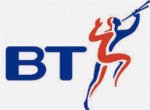Tom has been involved in a number of significant projects. The following is a short list of highlights.
Cyfas MACS is a new way of thinking about integrated communications in the emergency service control room. Unlike the traditional “Integrated Communication Control System” (ICCS) MACS is not based in custom hardware and arcane protocols. Firstly, it’s browser based meaning that any PC with a sound card can instantly be turned into an ICCS terminal. Secondly it’s built using COTS components on an industry standard web platform.
MACS’ carefully designed architecture allows it to fully utilise the scalability and resilience of enterprise level web technology. From a single system with all services installed on one PC through to systems spanning multiple datacentres able to deliver ICCS as a service to hundred of online users. MACS is scalable, MACS is resilient, MACS is available.
With full support for the new ESN network and legacy support for TETRA, DMR and numerous other radio systems MACS really is the complete solution to any ICCS requirement.
As of October 2015 Brigid Command and Control was the mobilising system for 3 of the UK’s Fire Services.
The work of BRIGID Command and Control begins the moment the 999 call is received, it queries BT’s EISEC system and initiates its own internal lookup, presenting the caller information and any associated operational intelligence to the operator.
Having created the incident, a combination of the type of incident and its location is used to calculate an appropriate response. The (GPS) position of each applicable appliance is evaluated against a model of the road network and the position of the incident to find the most effective means of getting the right appliances to the incident as fast as possible.
At-a-glance views are always available via the “asset register” and map window that give the states and positions of all the Service’s resources and all current incidents. Key pieces of operational intelligence associated with the location and the incident type are also available to assist the control room operator with deciding upon an initial response.
The operator is able to accept or quickly edit the system generated response proposal and mobilise the assets.
Brigid Command and Control then enters the dispatch process, mobilising the appropriate appliances, officers and stations. It manages the dispatch so that any failures in the turnout process – be they communications failures or failures of assets to mobilise or arrive at the incident within acceptable times – are highlighted to the operator.
The operator is then able to manage the incident (and others) through to completion. The system receives positional, status and operational updates from the in-vehicle terminals giving the operator a clear overview of the situation. Similarly updates from control are echoed to the devices in the field, keeping everyone dealing with the incident informed.
All the time the operator has access to operational intelligence associated with the incident and can manage the Service’s resources.
The system was actively designed with the Fire Service. The layout and flow of the system, the information shown or available at any given moment has been carefully designed in conjunction with control room operators to make the process of responding to incidents as intuitive and efficient as possible.
Tom Fosdick was brought into Seed Software specifically for the Command and Control project and was its architect from 2008 until 2015. Before Seed expanded in 2012, employing a full time business manager, Tom was also the Product Manager and was responsible for successfully managing development and delivery to the first customers.
An (early) brochure for the Command and Control System is available via the Science Web Site at Hull (pdf).
 APD Co-Ordinator
APD Co-Ordinator
Co-Ordinator was a family of products that provided and AVL control desk and Mobile Information platform.
Through the desktop application users could see at a glance the live and historic positions and statuses of trackable assets. The application was interactive, allowing the user certain control over the GPS devices in the field.
The Programmer application could be used both locally and remotely with APD’s “Inca” Intelligent GPS radio-modem.
The Server system was the hub of Co-Ordinator. As well as serving multiple applications, the server could communicate with Inca and other GPS devices using a wide range of “bearer” technology, from analogue radio to GSM modems to TETRA to IP Networks (e.g. 3G).
As well as being a suite of applications in its own right, the Co-Ordinator Server system was also an enabling platform for mobile data applications. By providing a bearer independent data channel from a TCP endpoint on the server to an RS232 port on the in-vehicle Inca it was easy to develop reliable mobile data applications using the Co-Ordinator server.
Co-Ordinator reports was an application based on Crystal Reports that provided a simple MIS layer on top of the Co-Ordinator database.
Tom was initially brought in to the Co-Ordiantor project (because of his experience with both communications and databases) to develop the Co-Ordinator Reports product. Tom quickly moved onto developing the main product and, although involved in many other successful projects within APD, remained ostensibly in charge of Co-Ordinator throughout most of his time at APD.
APD’s location solution is now known as ARTEMIS
 APD Inca
APD Inca
Inca was the driver behind Co-Ordinator. It was an intelligent radio-modem that was quite revolutionary at the time. In the late 1990s communication was expensive. Inca was able to use relatively complex rules about what it should log internally, what information it should transmit immediately, what information it should transmit in log files and over which type of communications any of these should happen.
It could be used in a Police Pursuit Vehicle for instance such that it would log an update every 30 seconds and then send all the updates in a single GSM modem call once per hour. If the vehicle responded to an emergency however, this could be automatically changed to send a SMS giving the position of the vehicle every 1 minute or 1km (configurable) to the server (and the hourly updates).
A reasonable amount of information on APD’s Inca / Co-Ordinator offering around the time Tom was working on the project can be found in a PowerPoint presentation on concord.com
 Easysoft Oracle ODBC Driver
Easysoft Oracle ODBC Driver
Of course Oracle has an ODBC Driver, but it’s Windows specific. Easysoft’s Oracle ODBC driver was (relatively) platform independent, making it possible to use it on pretty much anything that Oracle produced connectivity libraries for (including Windows).
Database backed web sites were rapidly gathering pace around Y2K. People wanted reliable servers with familiar development technologies. Bringing ODBC to Unix was a clever strategic move for EasySoft and its range of Unix database connectivity products proved highly popular both with legacy data applications but also the rapidly expanding field of web applications.
Tom’s role at Easysoft was to develop Oracle products. Easysoft had only a sketch brief for each product, so Tom was the architect and product manager for each.
 British Telecom Operations and Maintenance Centre
British Telecom Operations and Maintenance Centre
The OMC was, quite simply, a control system for multiple telephone exchanges. During the early / mid 1990s it was responsible for managing the vast majority of exchanges within the UK.
Tom was a programmer in the OMC team.
 British Telecom Research Labs
British Telecom Research Labs
Tom worked on a number of research projects for BT at Martlesham, ranging from high speed DSP projects through to image processing. Although Tom was officially employed as an Electronic Technician at this time his role in these projects was generally as an embedded programmer.

